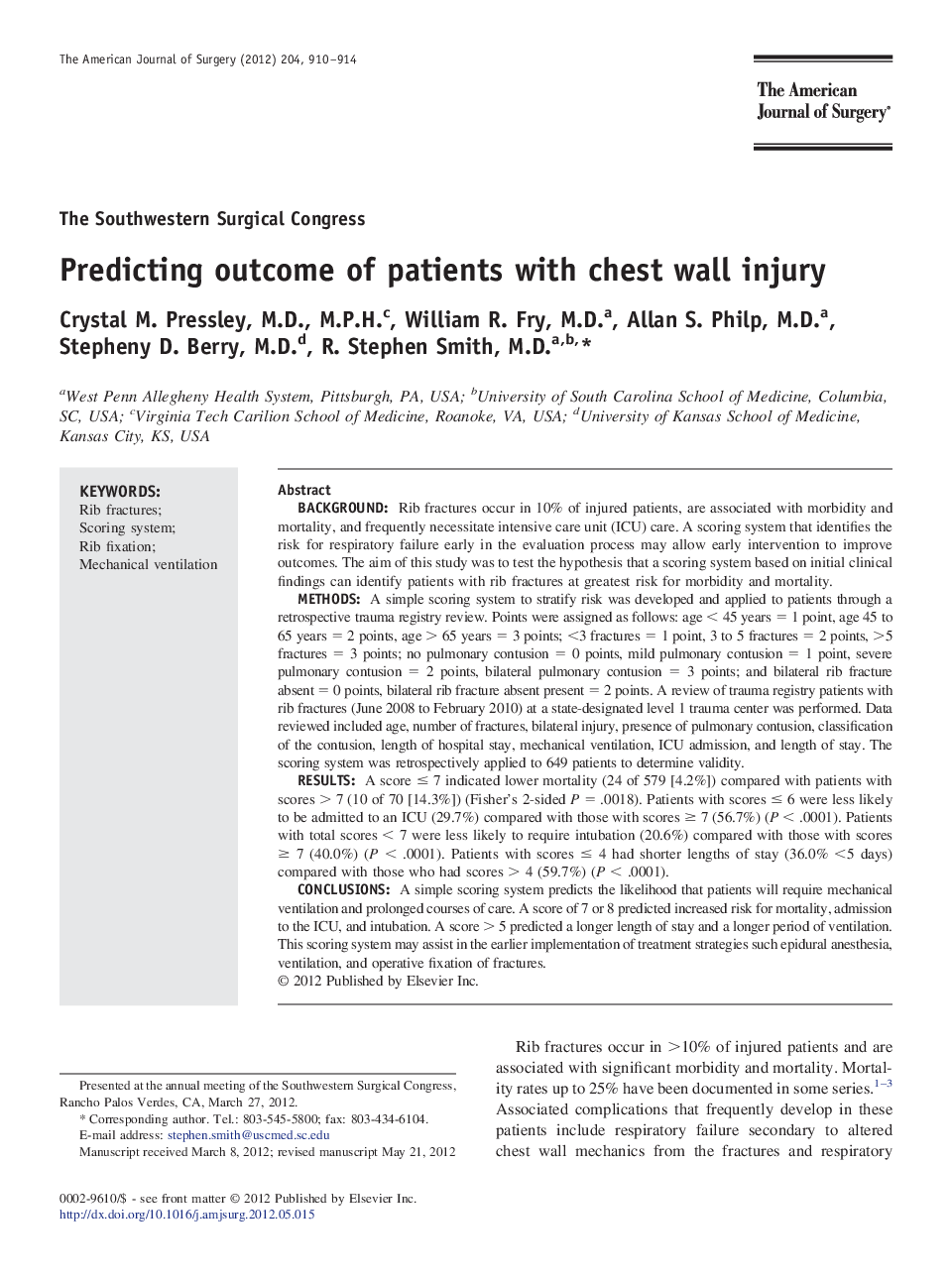| کد مقاله | کد نشریه | سال انتشار | مقاله انگلیسی | نسخه تمام متن |
|---|---|---|---|---|
| 4279580 | 1611524 | 2012 | 5 صفحه PDF | دانلود رایگان |

BackgroundRib fractures occur in 10% of injured patients, are associated with morbidity and mortality, and frequently necessitate intensive care unit (ICU) care. A scoring system that identifies the risk for respiratory failure early in the evaluation process may allow early intervention to improve outcomes. The aim of this study was to test the hypothesis that a scoring system based on initial clinical findings can identify patients with rib fractures at greatest risk for morbidity and mortality.MethodsA simple scoring system to stratify risk was developed and applied to patients through a retrospective trauma registry review. Points were assigned as follows: age < 45 years = 1 point, age 45 to 65 years = 2 points, age > 65 years = 3 points; <3 fractures = 1 point, 3 to 5 fractures = 2 points, >5 fractures = 3 points; no pulmonary contusion = 0 points, mild pulmonary contusion = 1 point, severe pulmonary contusion = 2 points, bilateral pulmonary contusion = 3 points; and bilateral rib fracture absent = 0 points, bilateral rib fracture absent present = 2 points. A review of trauma registry patients with rib fractures (June 2008 to February 2010) at a state-designated level 1 trauma center was performed. Data reviewed included age, number of fractures, bilateral injury, presence of pulmonary contusion, classification of the contusion, length of hospital stay, mechanical ventilation, ICU admission, and length of stay. The scoring system was retrospectively applied to 649 patients to determine validity.ResultsA score ≤ 7 indicated lower mortality (24 of 579 [4.2%]) compared with patients with scores > 7 (10 of 70 [14.3%]) (Fisher's 2-sided P = .0018). Patients with scores ≤ 6 were less likely to be admitted to an ICU (29.7%) compared with those with scores ≥ 7 (56.7%) (P < .0001). Patients with total scores < 7 were less likely to require intubation (20.6%) compared with those with scores ≥ 7 (40.0%) (P < .0001). Patients with scores ≤ 4 had shorter lengths of stay (36.0% <5 days) compared with those who had scores > 4 (59.7%) (P < .0001).ConclusionsA simple scoring system predicts the likelihood that patients will require mechanical ventilation and prolonged courses of care. A score of 7 or 8 predicted increased risk for mortality, admission to the ICU, and intubation. A score > 5 predicted a longer length of stay and a longer period of ventilation. This scoring system may assist in the earlier implementation of treatment strategies such epidural anesthesia, ventilation, and operative fixation of fractures.
Journal: The American Journal of Surgery - Volume 204, Issue 6, December 2012, Pages 910–914